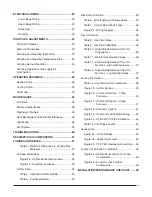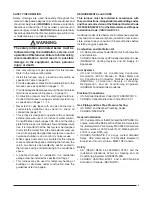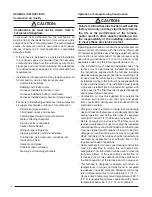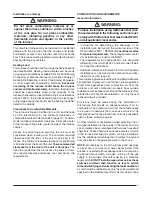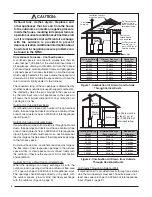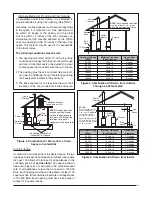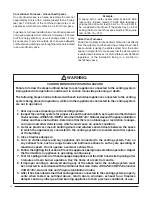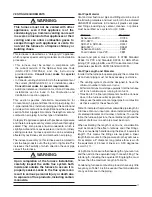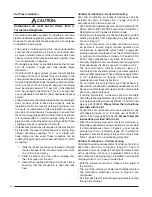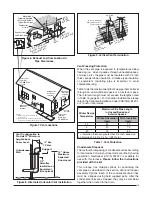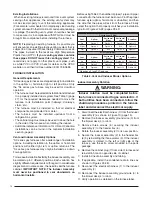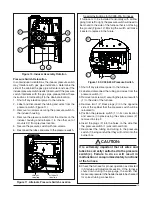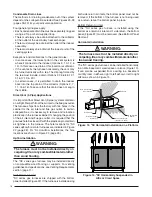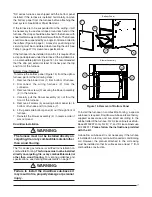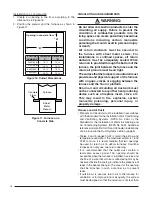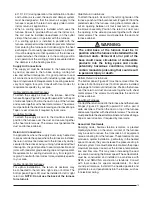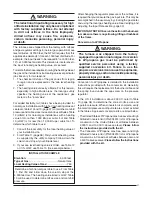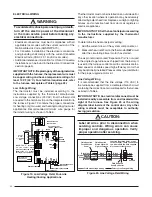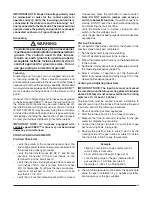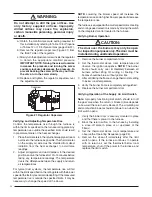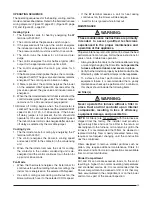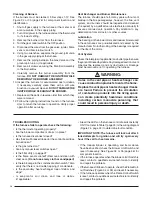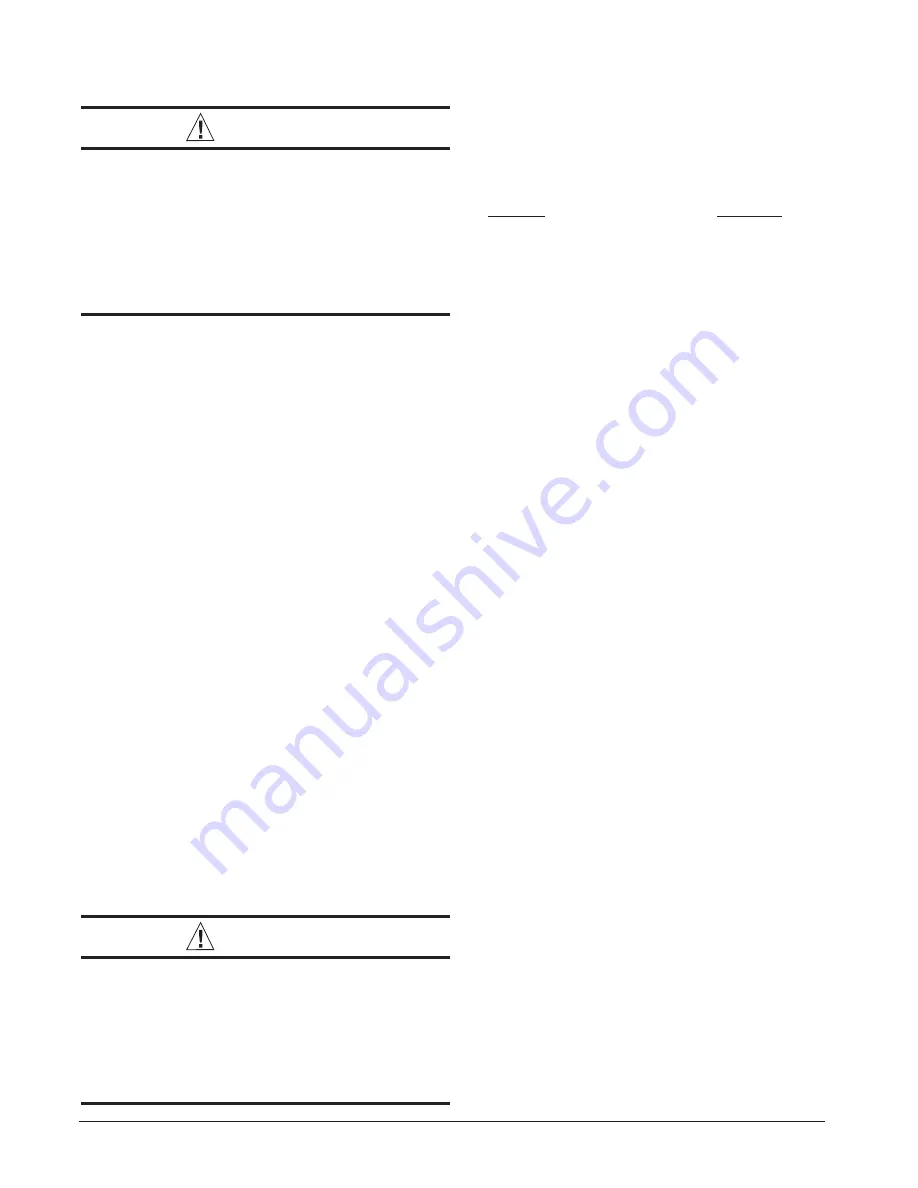
11
VENTING REQUIREMENTS
WARNING:
This furnace must not be vented with other
appliances, even if that appliance is of the
condensing type. Common venting can result
in severe corrosion of other appliances or their
venting and can allow combustion gases to
escape through such appliances or vents. Do
not vent the furnace to a fi replace chimney or
building chase.
This furnaces is classifi ed as a “Category IV” appliance,
which requires special venting materials and installation
procedures.
• This furnace must be vented in compliance with
the current revision of the National Fuel Gas Code
(ANSI-Z223.1/NFPA54) and the instr uctions
provided below.
Consult local codes for special
requirements.
• In Canada, venting shall conform to the requirements of
the current (CAN/CGA B149.1 or .2) installation codes.
Consult local codes for special requirements.
• Additional reference information for US and Canadian
installations can be found in the Combustion and
Ventilation Air section (page 5).
This section specifies installation requirements for
Conventional (1-pipe) and Direct Vent (2-pipe) piping. For
1- pipe installations, install vent piping per this section and
provide air for combustion and ventilation per the previous
section. Table 15 (page 44) contains the length of vent and
combustion air piping for either type of installation.
Category IV appliances operate with positive vent pressure
and therefore require vent systems which are thoroughly
sealed. They also produce liquid condensate, which is
slightly acidic and can cause severe corrosion of ordinary
venting materials. Furnace operation can be adversely
affected by restrictive vent and combustion air piping.
The inducer assembly on this furnace can be rotated to
vent the fl ue products out of the top, left or right side. This
increases the fl exibility of which direction the vent pipe
can exit the furnace.
WARNING:
Upon completion of the furnace installation,
carefully inspect the entire fl ue system both
inside and outside the furnace to assure it is
properly sealed. Leaks in the fl ue system can
result in serious personal injury or death due
to exposure of fl ue products, including carbon
monoxide.
Vent Pipe Material
Vent and combustion air pipe and fi ttings must be one of
the following materials and must conform to the indicated
ANSI/ASTM standards. In Canada, all plastic vent pipes
and fi ttings including any cement, cleaners, or primers
must be certifi ed as a system to ULC S636.
Material
.......................................
Standard
Schedule
40PVC
............................D1785
PVC-DWV
....................................... D2665
SDR-21 & SDR-26 ..........................D2241
ABS-DWV
....................................... D2661
Schedule 40 ABS ............................ F628
Foam/Cellular Core PVC ................ F891
Cement and primer must conform to ATSM Standard
D2564 for PVC and Standard D2235 for ABS. When
joining PVC piping to ABS, use PVC solvent cement. (See
procedure specifi ed in ASTM Standard D3138).
Vent Pipe Length and Diameter
In order for the furnace to operate properly, the combustion
air and vent piping must not be excessively restrictive.
• The venting system should be designed to have the
minimum number of elbows or turns.
• All horizontal runs must slope upwards from the furnace
at 1/4 inch minimum per running foot of vent.
• Transition to the fi nal vent diameter should be done as
close to the furnace outlet as practical.
• Always use the same size or a larger pipe for combustion
air that is used for the exhaust vent.
Table 15 indicates the maximum allowable pipe length for
a furnace of known input rate, when installed with piping
of selected diameter and number of elbows. To use the
table, the furnace input rate, the centerline length and the
number of elbows on each pipe must be known.
When estimating the length of vent runs, consideration
must be made to the effect of elbows and other fi ttings.
This is conveniently handled using the idea of “equivalent
length”. This means the fi ttings are assigned a linear
length that accounts for the pressure drop they will cause.
For example: a 2” diameter, long radius elbow is worth
the equivalent of 2.5 feet of linear run. A 90 degree tee
is worth 7 ft.
Using Table 15, measure the linear length of your vent run
and then add in the equivalent length of each fi tting. The
total length, including the equivalent fi tting lengths, must
be less than the maximum length in Table 15.
Condensing furnace combustion products have very little
buoyancy, so Table 15 is to be used without consideration
of any vertical rise in the piping.



